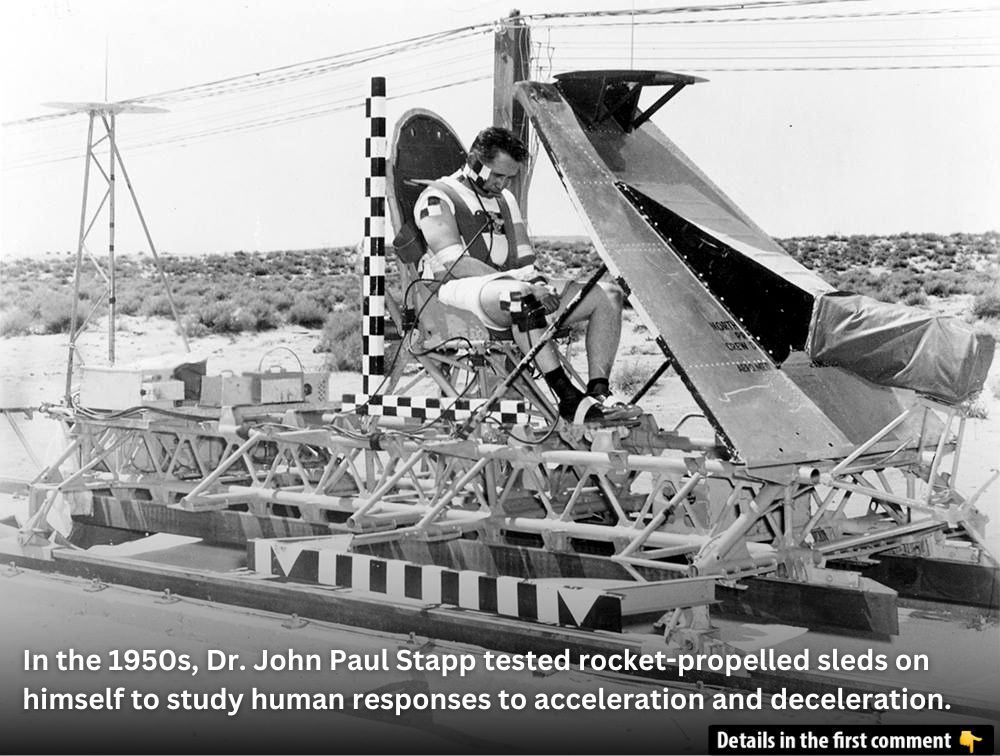Dr. John Paul Stapp, known as the “fastest man on Earth,” took risks few could fathom. In 1954, he rode a rocket-powered sled at a mind-boggling 632 mph, enduring G-forces that shattered records and his body. This daring scientist didn’t just test human limits; his groundbreaking experiments on deceleration forces paved the way for critical advances in aviation and automobile safety. His courage and commitment to science saved countless lives—though the cost to his own body was immense.
Stapp’s Final Rocket Sled Ride – December 10, 1954
Dr. Stapp’s most legendary achievement came on December 10, 1954, when he embarked on his final rocket sled test at Holloman Air Force Base in New Mexico. Strapped into the Sonic Wind I, Stapp accelerated to an astonishing 632 mph (1,017 km/h) in just five seconds. This speed, faster than a bullet from a handgun, was already impressive, but the real test was the sudden deceleration. The sled came to a complete stop in just 1.4 seconds, subjecting Stapp to a mind-boggling 46.2 G-forces. This was the highest G-force ever endured by a human in a forward-facing position, pushing Stapp’s body beyond its natural limits.
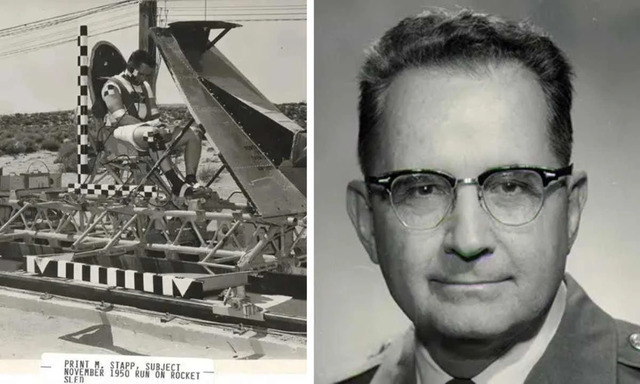
The effects were immediate and brutal. His blood vessels burst in his eyes, causing them to flood with blood, and for a moment, he feared he had gone permanently blind. His body was slammed against the harness, enduring forces that could have easily shattered bones and crushed internal organs. However, against all odds, Stapp survived. By the following day, his eyesight had partially returned, though it never fully recovered.
Video
Watch the video to meet the man who strapped himself to a rocket for science – Dr. John Paul Stapp’s daring experiments!
The Rocket Sled Tests: A Journey of Endurance
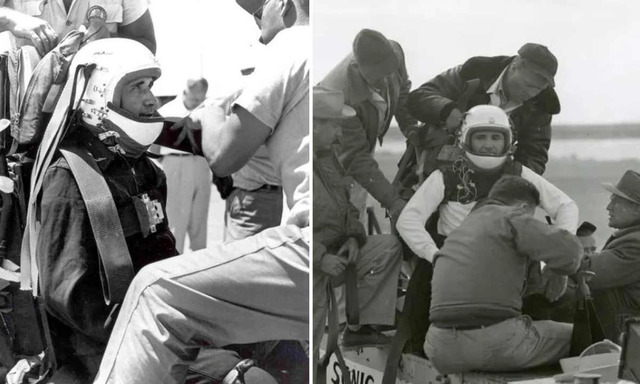
Dr. Stapp’s fascination with human endurance began in 1947 at Muroc Dry Lake (now Edwards Air Force Base). There, he conducted his first test on a rocket sled at 90 mph—a speed considered incredibly fast at the time. Over the following years, Stapp subjected himself to a series of increasingly extreme tests, each more intense than the last.
By 1949, he faced the first forward-facing tests, which subjected his body to significantly higher G-forces. The stakes were high, and the risks were greater than ever. During a 1951 test, Stapp suffered broken ribs and lost several teeth, and he temporarily lost his vision due to retinal hemorrhages. Yet, Stapp persevered, motivated by the potential benefits of his research.
Through these brutal tests, Stapp was not just testing human endurance; he was laying the groundwork for advancements that would save countless lives in the future. His findings helped improve safety harnesses, ejection seats, and the overall safety of aviation.

Stapp’s Work: Shaping the Future of Safety
Beyond his work with the military and aviation, Dr. Stapp’s research had a significant influence on automobile safety as well. As “The Fastest Man on Earth,” Stapp used his fame and expertise to advocate for much-needed changes in car safety standards.
Among his major contributions were:
- The push for seat belts in all vehicles
- The development of stronger and more accurate crash test dummies
- A focus on safer car designs based on his G-force research
His efforts ultimately led to the Highway Safety Act of 1966, which mandated the installation of seat belts in all U.S. cars starting in 1968. These life-saving measures are now standard in all modern vehicles, thanks to Stapp’s early work.
Dr. Stapp’s Role in Space Exploration
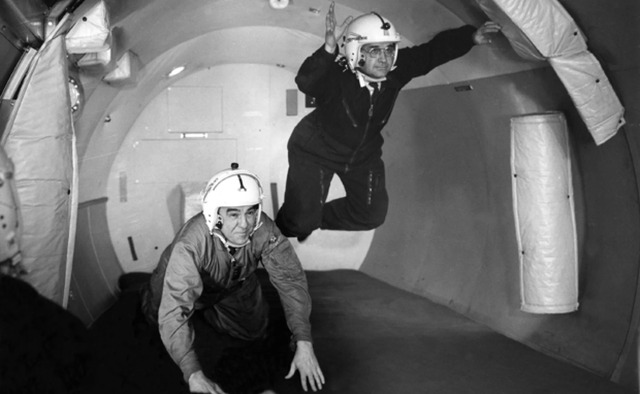
Stapp’s work didn’t stop at aviation and automobiles. His contributions extended into the realm of space exploration, where his research played a critical role in shaping NASA’s safety protocols. In 1957, Stapp led Project Manhigh, which involved sending pilots in high-altitude balloons to the edge of space, some 102,000 feet above the Earth’s surface.
The data from these experiments were crucial in helping NASA design astronaut suits, helmets, and spacecraft cabins that could withstand the harsh conditions of space. Stapp’s work ensured that astronauts would have the protection needed for space exploration, laying the foundation for safe human space travel.
From Missionary’s Son to Scientific Pioneer
Dr. Stapp’s journey to becoming one of the most influential figures in safety research started in Bahia, Brazil, where he was born on July 11, 1910, to American missionary parents. Raised in a remote setting, he was homeschooled until the age of 12 before moving to Texas for high school. Although Stapp initially wanted to pursue writing, a personal tragedy—the loss of his infant cousin—led him to switch his focus to medicine.
By 1939, he earned his Ph.D. in Biophysics from the University of Texas, followed by an M.D. from the University of Minnesota in 1944. Stapp’s military career began shortly after, when he joined the U.S. Army Air Forces as a flight surgeon. It was during this time that he developed an interest in studying the effects of G-forces on the human body.
The Final Years: Recognition and Legacy
After retiring from the Air Force in 1970, Dr. Stapp continued to shape safety research for the remainder of his career. He worked with NASA, the U.S. Surgeon General, and the National Highway Traffic Safety Administration to continue his advocacy for safer transportation and space travel.
In recognition of his groundbreaking work, Stapp received numerous awards, including the National Medal of Technology in 1991 and induction into the National Aviation Hall of Fame. He also received the Air Force Cheney Award for Valor, solidifying his place as a hero in both the scientific community and the world of aviation and space safety.
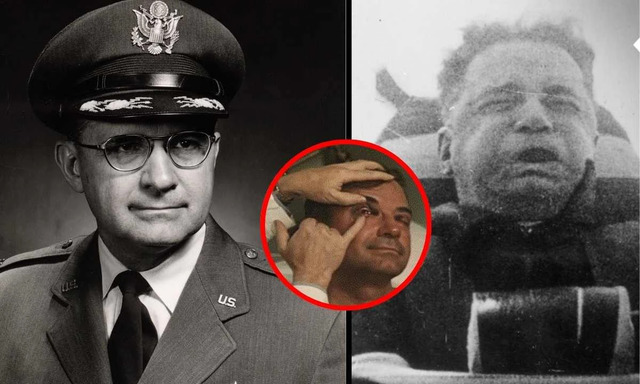
Stapp’s Law and Murphy’s Law
Dr. Stapp’s impact went beyond his research; he also popularized two famous sayings:
- Stapp’s Law: “The universal aptitude for ineptitude makes any human accomplishment an incredible miracle.”
- Murphy’s Law: “Anything that can go wrong, will go wrong.”
These sayings are not only a testament to his sense of humor but also a reflection of his philosophy on human progress and the unpredictability of life.
Video
Watch the video of the thrilling Manned Rocket Sled Run, where a test subject experiences extreme acceleration!
Conclusion: A Legacy of Innovation and Safety
Dr. John Paul Stapp’s life was a testament to the human spirit’s ability to push beyond its limits in the pursuit of knowledge. His daring experiments with rocket sleds and G-forces revolutionized safety systems in aviation, automobiles, and space exploration. The seat belts in your car, the ejection seats in fighter jets, and the safety systems in space missions all owe their existence to his pioneering work.
Although he passed away in 1999, Dr. Stapp’s legacy lives on. His courage and determination to test the limits of human endurance paved the way for a safer world, and his contributions continue to save lives every day.
